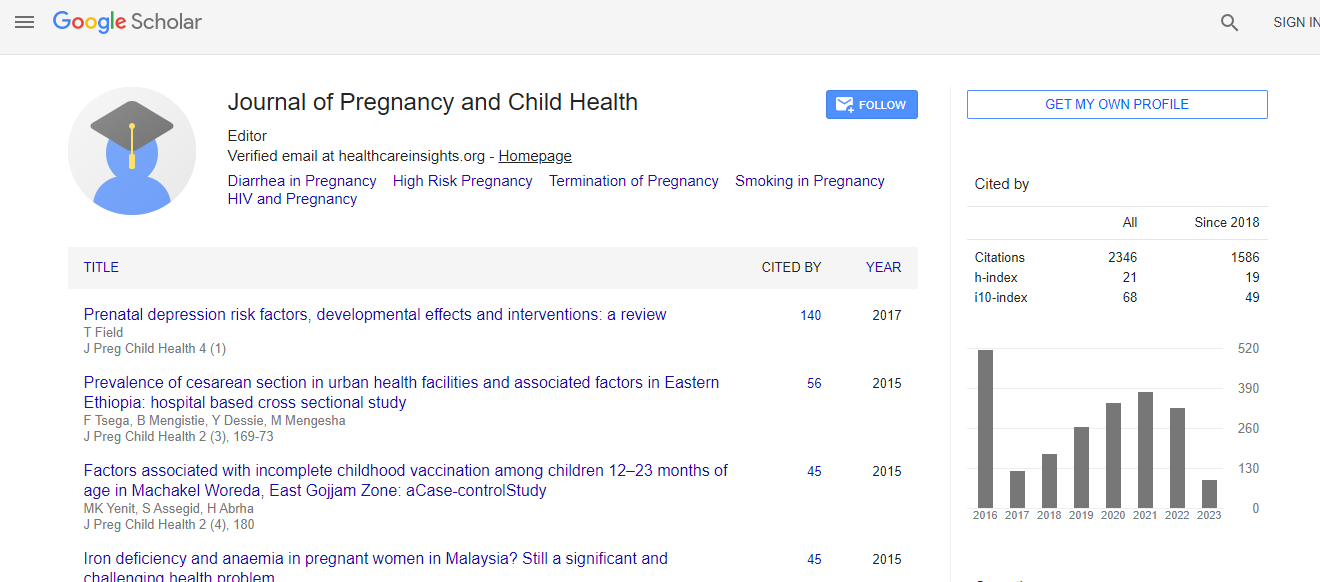Research Article
Women’s Perception and Experience of Caesarean Delivery in Ogbomoso, Southwest Nigeria
| Kola M Owonikoko*, Samuel Akinola, Olarenwaju A Adeniji and Akintomiwa O Bankole | |
| Department of Obstetrics and Gynecology, Ladoke Akintola University of Technology Teaching Hospital, Ogbomoso, Oyo State Nigeria | |
| Corresponding Author : | Kola M Owonikoko Department of Obstetrics and Gynecology Ladoke Akintola University of Technology Teaching Hospital, Ogbomoso Oyo State, Nigeria Tel: +2348033593683 E-mail: musliudin@yahoo.co.uk |
| Received: March 30, 2015; Accepted: May 01, 2015; Published: May 06, 2015 | |
| Citation: Owonikoko KM, Akinola S, Adeniji OA, Bankole AO (2015) Women’s Perception and Experience of Caesarean Delivery in Ogbomoso, Southwest Nigeria. J Preg Child Health 2:161. doi: 10.4172/2376-127X.1000161 | |
| Copyright: © 2015 DOwonikoko KM, et al. This is an open-access article distributed under the terms of the Creative Commons Attribution License, which permits unrestricted use, distribution, and reproduction in any medium, provided the original author and source are credited. | |
Abstract
Objectives: To explore pregnant women’s perception, experience of caesarean section (CS) and its socioeconomic impact. Materials and methods: The study was a cross-sectional study involving 400 pregnant women in three major hospitals in Ogbomoso. They were interviewed using a multi-item structured pre-tested questionnaire. The questionnaire was self- administered by literate women, while illiterate women had theirs administered by trained research assistants. Results: Almost all 377(94.2%) considered vaginal delivery as preferred method while 17(4.3%) wanted CS. About half 187(46.8%) believed that CS was too expensive and 57(14.2%) thought that after one CS, subsequent deliveries will be by CS. One hundred and thirty (32.3%) respondents had undergone previous CS and 92(70.8%) of them believed that the CS was justified. A negative reaction from the relatives was experienced by 31(23.8%) of respondents on account of their inability to have vaginal delivery and most of this negative reaction were from the husband in 14(45.2%) of cases. Two hundred and fifteen (53.8%) women had right perception about CS. Right perception was statistically significant with age group (p<0.001), educational status (p<0.001), occupation (p<0.001) and educational status of the partner (p<0.001). Conclusion: The majority of women in this study preferred vaginal delivery. Adequate education and enlightenment about CS of the female population will help reduce negative perceptions about CS and make it a more acceptable mode of delivery when the need for it arises.

 Spanish
Spanish  Chinese
Chinese  Russian
Russian  German
German  French
French  Japanese
Japanese  Portuguese
Portuguese  Hindi
Hindi 
